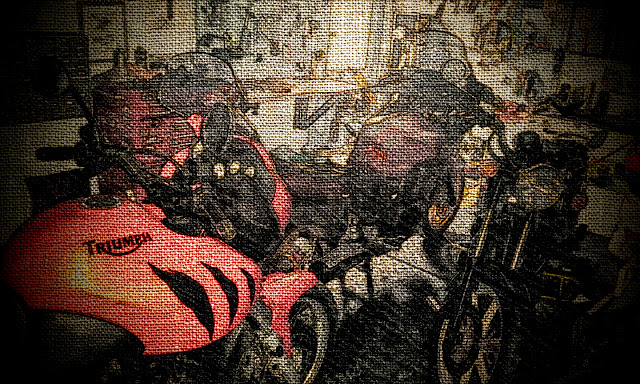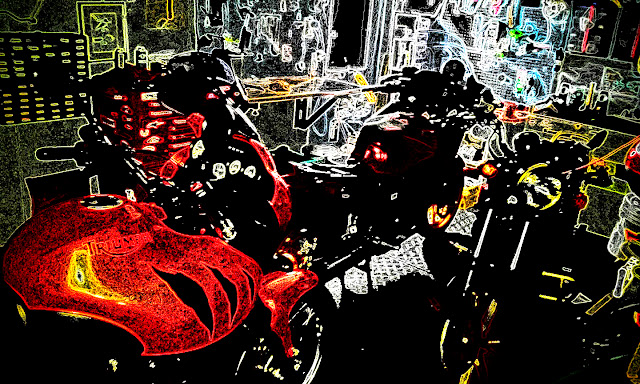Emergency remote teaching during this COVID19 pandemic is turning out to be quite unsustainable. I staggered to the end of last week feeling stretched to the point of breaking by the endless administrative push to make arbitrary and pedagogically suspect Ministry of Education remote learning expectations happen.
Three hours per class per week might have sounded like a reasonable though random expectation when it was dreamed up a few weeks ago, but it raises a lot of questions. Here are some from me in no particular order:
 1) Basic Needs Have to Come Before Curriculum
1) Basic Needs Have to Come Before Curriculum
How can we set an arbitrary time limit on acceptable work when we’re ignoring basic needs?
Trauma causes a disruption in the foundations need to bring students to learning. Maslow’s Hierarchy of Needs came about in the 1950s. Abraham Maslow, the psychiatrist who invented the concept, uses it to show how complex human thinking, like learning, can’t happen without basic needs being met.
The current emergency situation has damaged our ability to mitigate the shortcomings students may be experiencing while trying to learn at home. Those students who counted on our school’s breakfast program to be fed aren’t being at the moment. Those students who depended on our developed one on one special education support services in school aren’t getting them at the moment. Even students who may have enjoyed physiological security before the pandemic shutdown might now be experiencing scarcity for the first time as parents are suddenly laid off.
With all of that under consideration, dropping blanketed, mandated hourly expectations on all students regardless of their circumstances is callous to an inconceivable degree. Where is the compassion?
The ‘this isn’t elearning or even remote learning, it’s emergency response learning” doesn’t seem to have registered with the people who run things, though it certainly has with all the front line education workers in Ontario who are trying to force this square peg into an infinite variety of unique, never before seen student learning circumstances.
I was so wound up about this on Thursday night after a week of communicating with students and parents in various states of crisis that I was up at midnight trying to think my way out of it on Prezi:
 That we’ve also piled transliteracy expectations that many staff and students don’t have on top of a decline in the basic needs required to learn makes the circumstances even more untenable. There are no skills based requirements and next to no mandatory professional development for teachers in becoming digitally transliterate. It only happens with our students when they’re lucky enough to get a teacher who spends their own time and money on developing that critical 20th Century literacy.
That we’ve also piled transliteracy expectations that many staff and students don’t have on top of a decline in the basic needs required to learn makes the circumstances even more untenable. There are no skills based requirements and next to no mandatory professional development for teachers in becoming digitally transliterate. It only happens with our students when they’re lucky enough to get a teacher who spends their own time and money on developing that critical 20th Century literacy.
A coherent, skills based, mandatory approach to digital transliteracy should be a priority when we return. How this is all going down could be significantly different if we were approaching this with digitally transliterate and enabled staff and students. We certainly wouldn’t have wasted the first three weeks trying to find out if our staff and students even have ICT technology at home before moving into remote learning using tools most of them don’t know how to use effectively.
2) Why is differentiation always the first thing to die when the system decides to act unilaterally?
Three hours for one student isn’t three hours for another. Are teachers being expected to design individual work for the dozens upon dozens of students they are trying to direct through remote learning?
Let’s say Maslow’s basic needs were somehow addressed and we ensured that every student in Ontario has food, shelter and the other basic needs required to climb the hierarchy to a point where they can focus on learning. We didn’t come close to addressing it when times were good (actually, the government in charge is actively working against it), so doing it during a pandemic emergency seems even more unlikely, but let’s say we manage it. Let’s say we also suddenly have staff and students who are digitally transliterate (again we’re miles away from this, but let’s pretend). Even in that perfect Ontario the three hours per week per course per week expectation would be startlingly insensitive to how students learn. Wouldn’t it be great if people were all the same? It’s so hard to manage otherwise! It might have been easy to trot out a suggestion like that, but 3 hours of work is different for pretty much every student, and trying to assess that through atrophied and inconsistent digital technologies is nearly impossible, even for a digitally transliterate teacher.
I have one gifted, ASD student who had to back off on the third year university equivalent artificial intelligence project she was working on remotely because she doesn’t have the mathematics foundations needed to comprehend it (she was worried this would hurt her average – it won’t). I have another gifted ASD student whose anxiety has been triggered by this pandemic to such a degree that he’s unable to do anything (he’s also worried about it hurting his average – it won’t, though that’s me, not system-think). That’s happening with two students with similar IEPs!*
* IEPs are individual education plans that all special education students have, though I think every student should have one since they’re all special and many less fortunate students don’t have parents with the resources to weather the IEP process even when they should have one. In Ontario even our spec-ed support is predicated on privilege. We had to put out thousands in testing to get my son’s ASD diagnosis accepted. If you can’t afford that, you can’t access the support.
Now think about the other three dozen IEPs I’m juggling, but because I’m not an insensitive jerk I treat every student like they have an IEP because you never know what’s happening in a student’s life. Trauma like divorce, a death in the family or parental loss of income can negative influence a student’s learning at any time. Like the kid whose dad emailed me this week in response to my contacting them about a lack of weekly engagement (we’re required to pester people every week if they’re not engaged). His grandmother just passed from the pandemic, but this interfered with our systemic 3hr/course/week mandate and the systemic response we’ve built to force, um, I mean support it.
I have over 60 students this semester. Others have over 90! But bigger class sizes are coming because we’re about to agree to a contract under duress that further deteriorates learning environments by cutting funding and forcing more kids into each class – evidently the pandemic emergency means it’s ok for our government to force (another) illegal contract on us using this emergency as the excuse, but I digress.
Am I supposed to custom design 3 hours of work for each one of my remote learners? Or just throw what three hours of work would look like for a fictitious ‘average’ student (there are no average students in a pandemic) at everyone? Even if it might take some of them 10 hours? Even if some of them can’t do it at all in these circumstances?
Three hours per course per week is the worst kind of reductionist system-think. The project work I set up for my students is based on self reporting, but still has expected outcomes because the way this is going, we’ll be asked to assign grades to work, and if I don’t have that work then a student’s grade will suffer. The people who set this as a requirement shouldn’t be working in education.
OSSTF has suggested pass fail, which is a step in the right direction. I’m going to take it a step further, grades or pass/fail. No one is going to have this situation diminish their grades, period. It would be nice if the Ministry mandated that, but if no one making the big bucks can make a compassionate decision that acknowledges the mess that this is, I will.
3) and what about the labour abuse?
If a student is working absurd hours, why are they still being held to arbitrary expectations around time spent in class? Why is no one looking to labour abuse with Ontario’s students?
 |
It’s the ministry of work now.
Labour sounded too dignified. |
The education system didn’t just passively let this student labour abuse happen, it caused it to happen when it suspended classes. I’m happen to be teaching three graduating classes this semester. I’m hearing from many of them that they are working more than forty hours per week, in several cases over 50 hours per week in their ‘heroic’ emergency services wage slave jobs. I had one fifteen year old tell me he just came off a 44 hour work week and was sorry he couldn’t do the remote learning because he kept falling asleep while attempting it. I’m supposed to put ‘does not meet expectations’ in his work for week three of remote learning because he’s less than three hours on the clock. I’m also supposed to bother him and his parents (who have been laid off during the pandemic shutdown) every week asking why he isn’t meeting remote learning expectations.
Students in Ontario make an even more miserable minimum wage than the Fordnation reduced adult minimum wage. He likes to call them heroes, but he won’t pay them any more to be heroes during an emergency. He just offered a smaller professional group that doesn’t grapple with minimum wage a raise, but not the kids who we took out of school in order to protect them (or at least not be liable for them) so they could go and work in much more COVID-spreadable minimum wage jobs. Step one would be to realize we didn’t shut down schools to protect students, we did it to protect system liability. Step two would be to ensure all students are rewarded for their ‘heroic’ efforts. I think a $20/hour minimum student wage during the pandemic for critical service work is a start. Step three would be to forgive any student working more than the 28 hour a week student limit. I don’t imagine any of those things will happen though. I’m left wondering if many of these students are still being paid student minimum wage, because over 28 hours a week they should at least be making adult minimum wage. Betcha they aren’t. If that isn’t the very definition of child labour abuse, I don’t know what is. It’s shameful.
***
Being asked to deal with student learning difficulties, socio-economic status and even their psychological challenges isn’t new for me as a teacher, but being expected to be their main point of contact through remote learning for all of these things isn’t just overwhelming, it’s emotionally exhausting. I’m occasionally reduced to tears of frustration by the school system, but last week was a new peak – not that teacher burnout is on anyone’s radar.
When a colleague finally forwarded an inactive student to admin for support the other week the first thing they were asked to do was contact them in more ways. I’m sure everyone who isn’t trying to communicate on a strict weekly schedule of expectations with a many classes of students through the limited bandwidth of phones and online communications is very busy having meetings (I was dragged into no less than 4 last week and I’m a front line teacher), but those of us in the trenches would appreciate some immediate pickup rather than an attempt to off load even more onto us.
While I’m spending my own money on technology, heating, electricity, internet, telephone and burning through more sanity than I should in order to ‘be the education system’ for the sixth week in a row, I’m told that we now have a tentative contract because students need stability at a time like this. I’m not sure why they didn’t need stability last year, or why I had to take another strike day pay cut in the face in order to end up agreeing to what was being offered then anyway, but that looks like how it’s going to go. After a year of outright abuse which has included illegal bargaining (good faith bargaining is protected in the Canadian Charter of Rights & Freedoms, and there has been little of that this year) and repeatedly demeaning our profession, this government (when they aren’t making up fictitious stories about supporting students in remote learning) are going to use this pandemic to increase class sizes and cut learning supports. We haven’t heard the details yet. I’m sure we’ll get a very streamlined process designed to force compliance. It’s hard to work in a system where trust has been compromised in so many places. I just have to remember what’s most important: don’t let it hurt the kids, though at some point I’ll have taken so many bullets that I don’t think I won’t be able to take any more.
It hasn’t been a great week three in remote learning during a pandemic.
from Blogger https://ift.tt/3f2Lxzc
via IFTTT
















































































